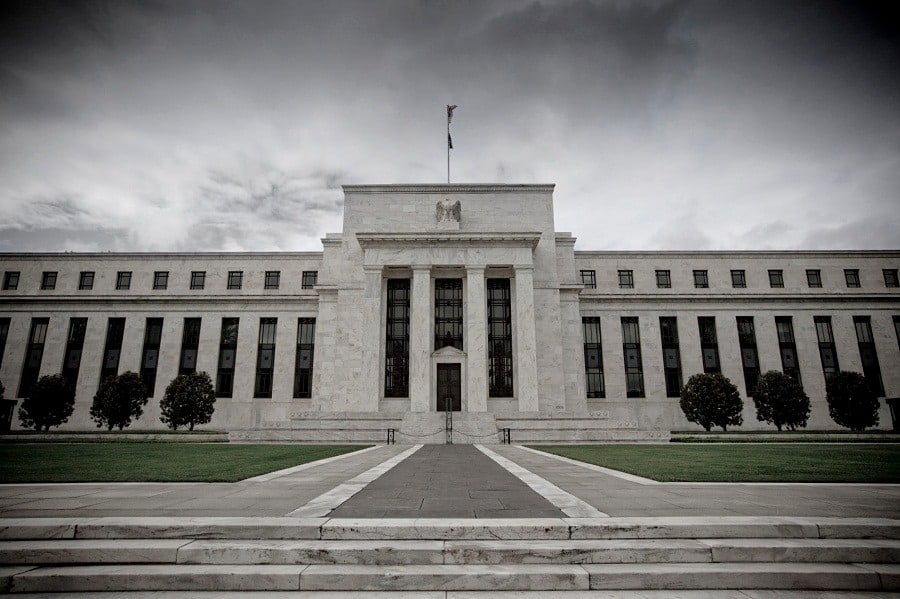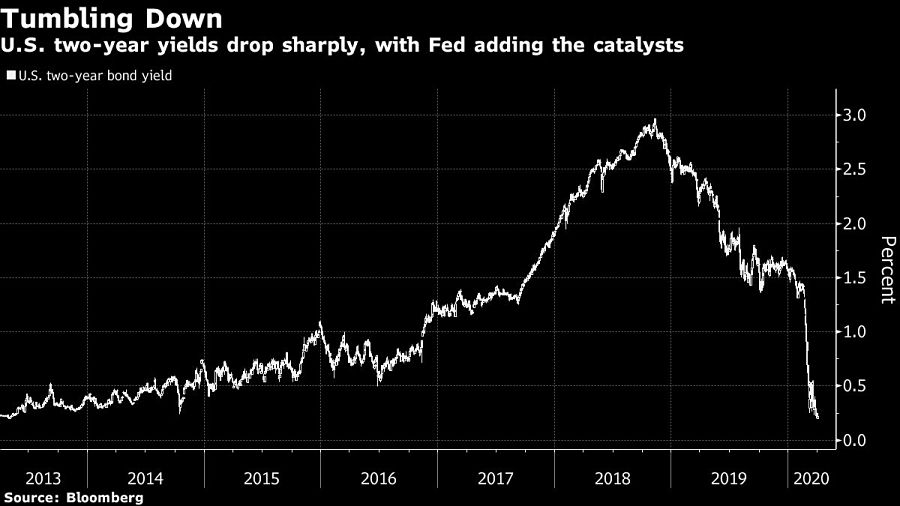

Negative yields in the $17 trillion Treasury market are a step closer to reality after the Federal Reserve eased bank capital requirements Wednesday.
The move by the Fed allows banks to take on more leverage so they can stomach further bond purchases and absorb a lack of liquidity for Treasuries following a turbulent few weeks. That’s pushing rates down, with two-year yields touching the lowest level since 2013 after the announcement, to hover just over 20 basis points above 0% Thursday. A bigger-than-expected surge in U.S. jobless claims data Thursday also helped underpin investor appetite for Treasuries and keep yields in check.

“It is adding one more stone to the edifice,” Antoine Bouvet, senior rates strategist at ING Groep, said about the Fed’s announcement.
“With no end in sight for the economic damage of the epidemic, this is one of the best risk-reward trades out there,” he said, referring to holding two-year Treasuries.
Over $10 trillion of investment-grade bonds have negative yields globally, with Treasuries so far providing a notable exception. In Germany, the entire yield curve dipped below 0% this year, meaning that investors who intend to hold the country’s bonds to maturity may take a loss.
Technical analysis by Bank of America’s Paul Ciana shows that a 10-year yield of zero to 0.25% is “reasonable” during the second quarter under a situation in which coronavirus-related quarantines, social distancing and medical breakthroughs prevail, he wrote in a note Thursday; a worse case, however, could see the 10-year rate drop below zero.
The number of Americans applying for unemployment benefits more than doubled to a second straight record, highlighting the devastating economic impact of the coronavirus as shutdowns widened across the country. A total of 6.65 million people filed jobless claims in the week ended March 28, according to Labor Department figures released Thursday.
The Fed temporarily relaxed the so-called leverage ratio Wednesday, meaning the biggest banks no longer have to add Treasuries and reserves into the basket of assets they’re required to maintain capital for -- significantly reducing capital requirements. The Fed said it made the decision because “liquidity conditions in Treasury markets have deteriorated rapidly.”
“Two-year yields hitting zero isn’t a massive stretch, especially if equities start to register new lows,” said John Davies, a U.S. interest-rate strategist at Standard Chartered. This “makes it more likely.”

Futures indicate stocks will build on Tuesday's rally.

Cost of living still tops concerns about negative impacts on personal finances

Financial advisors remain vital allies even as DIY investing grows

A trade deal would mean significant cut in tariffs but 'it wont be zero'.

Inflation, economic risk is greater than previously thought.
RIAs face rising regulatory pressure in 2025. Forward-looking firms are responding with embedded technology, not more paperwork.
As inheritances are set to reshape client portfolios and next-gen heirs demand digital-first experiences, firms are retooling their wealth tech stacks and succession models in real time.
